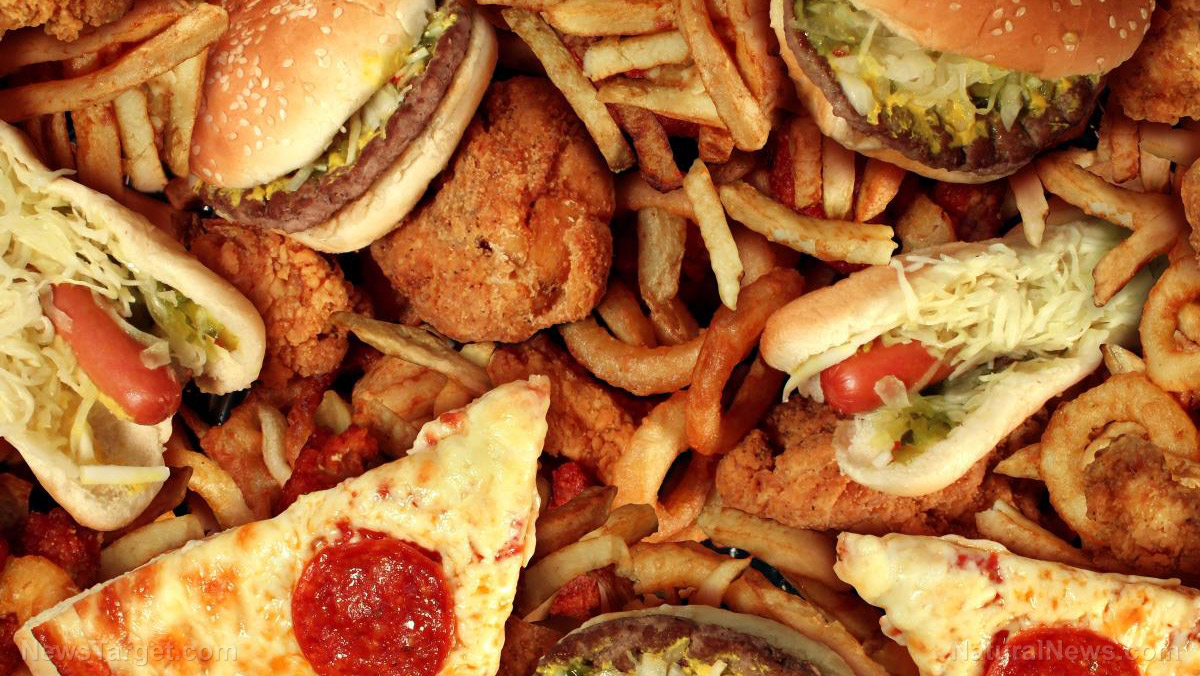 Parler
Parler Gab
Gab
Restaurant meals a recipe for poor nutrition
For their study, the researchers looked at what more than 35,000 American respondents ordered at full-service and fast food restaurants. The respondents previously completed a 24-hour dietary recall questionnaire on several occasions between 2003 and 2016. The researchers used the American Heart Association 2020 Diet Score to measure the nutritional quality of the respondents' restaurant meals. The diet score takes into account factors like the amount of fruits and vegetables, whole grains, sodium, saturated fat and sugary drinks in a meal. Scoring ranges from one to 50, with 40 being the "ideal" mark. At full-service restaurants, around 50 percent of the meals that the respondents consumed over the course of 13 years scored less than 20, indicating poor nutritional quality. The other half scored between 20 and 30, which signifies intermediate quality. At fast food restaurants, 70 percent of the meals that the respondents consumed between 2015 and 2016 scored less than 20. That percentage was down from 75 percent in 2003 to 2004. The remainder were of intermediate quality. Notably, less than 0.1 percent of all the restaurant meals consumed over the course of 13 years were of ideal quality. "Our findings show dining out is a recipe for unhealthy eating most of the time," said Dariush Mozaffarian, dean of Tufts' Friedman School of Nutrition Science and Policy and one of the study authors. "It should be a priority to improve the nutritional quality of both full-service and fast food restaurant meals, while reducing disparities so that all Americans can enjoy the pleasure and convenience of a meal out that is also good for them." Those disparities were evident in the tendency of some groups to eat more healthily at restaurants than others. For instance, the quality of fast food meals eaten by Whites and Mexican-Americans improved. But the quality of fast food meals consumed by African-Americans remained the same. In addition, poor-quality fast food meals comprised only 60 percent of what people with college degrees ate at restaurants at the end of the study – down from 74 percent at the start. Meanwhile, the share of unhealthy fast food meals that people with a high school diploma consumed at the end of the study remained high at 76 percent.Fast food, restaurant meals a large part of the American diet
The researchers also examined the extent to which Americans ate out. They found that restaurant meals accounted for 21 percent of the respondents' total calorie intake. Full-service restaurant meals accounted for nine percent while fast food contributed 12 percent. The respondents also increased their intake of fast food breakfast toward the end of the study. Fast food breakfast made up nearly eight percent of all breakfast meals eaten by the respondents, up from a little over four percent at the beginning. Mozaffarian noted that improving the quality of America's restaurant meals offers a big opportunity to reduce diet-related diseases and healthcare costs. This was because food is the leading cause of poor health in the country, he said. "At restaurants, two forces are at play: what's available on the menu and what Americans are actually selecting. Efforts from the restaurant industry, consumers, advocacy groups and governments should focus on both these areas," he added. The researchers recommended adding more whole grains, nuts, legumes, fish, fruits and vegetables to restaurant menus. Meanwhile, they called for reducing the amount of salt added to restaurant meals. They made this call because sodium levels in fast food did not improve while the sodium content of full-service dishes increased.Why cook at home
Here are several more reasons why you should cook at home instead of eating out:- It's proven to be healthier. Studies suggest that people who cook more often than eat out have an overall healthier diet.
- It's easier to watch your calories. Making a meal yourself ensures that the portion sizes and calories counts are where you want them to be.
- It can save time. Cooking at home can save you time because you don't have to wait for your order to arrive, as is usually the case when you eat at restaurants.
- It saves money. When you order at restaurants and fast food chains, you don't just pay for the food but also for the services. Plus, it's cheaper to buy raw ingredients at a grocery store than to buy restaurant meals or fast food.
- It's personalized. You eat the foods you love exactly the way you prefer to eat them when you cook at home.
Deborah Birx hid covid info from Trump, altered CDC guidelines without approval
By Ethan Huff // Share
Germany’s birth rate improbably falls by 11% in the first quarter of 2022
By Lance D Johnson // Share
By Mary Villareal // Share
Common signs and symptoms of magnesium deficiency
By Olivia Cook // Share





